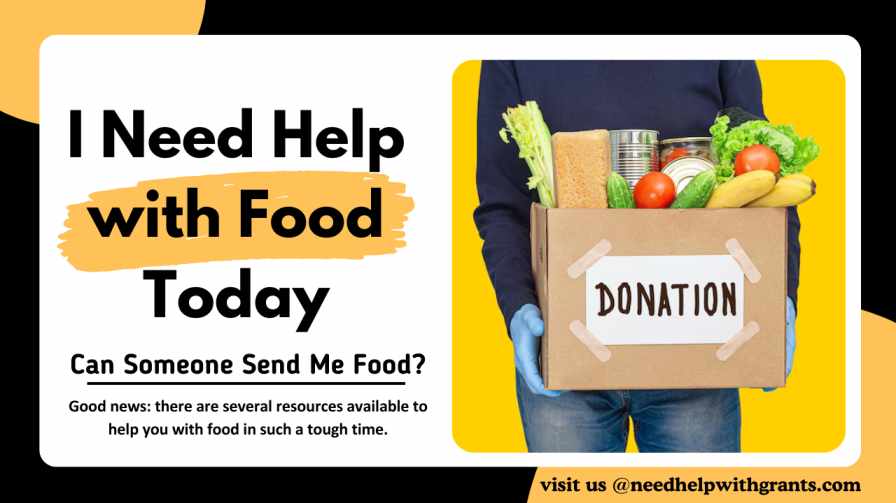For many individuals and families, food stamps (Supplemental Nutrition Assistance Program or SNAP) are a critical resource to ensure food security. However, not everyone qualifies for these benefits, leaving a gap that must be filled with alternative programs and resources. This article explores several options available to those who are not eligible for SNAP but still need help.
Are There Other Programs If I Don’t Qualify for Food Stamps But I Need Help?
If you do not qualify for food stamps, there are alternative programs and resources available to help you access food. Here are some options:
1. Food Pantries and Food Banks
Food pantries and banks are community organizations that provide free food to individuals and families in need. These organizations often partner with local supermarkets, farms, and food manufacturers to collect surplus food and distribute it to those who need it most.
How to find them: Many food banks have websites where you can locate a pantry near you. Additionally, community centers, churches, and social service organizations often have information about local food pantries.
Eligibility: Most food pantries do not have strict eligibility requirements. Often it is enough to demonstrate the need to eat.
2. Senior Farmers’ Market Nutrition Program
The Senior Farmers Market Nutrition Program (SFMNP) provides fresh fruits, vegetables, herbs and honey to seniors ages 60 and older. To qualify, the recipient’s household income cannot exceed 185% of the federal poverty income level. guidelines.
Twenty-seven states and two tribal nations currently participate in this program, and all fruits and vegetables provided are grown locally.
3. Community Meals and Soup Kitchens
Community meals and soup kitchens offer free hot meals to anyone who needs them, without extensive paperwork or proof of income. These programs are typically run by nonprofit organizations, religious groups, and community centers.
How to find them: Information about soup kitchens and local community meals can usually be found through social service agencies, faith-based organizations, and local community centers.
Eligibility: These programs are generally open to everyone, ensuring that anyone who needs a meal can receive one.
4. The Commodity Supplemental Food Program (CSFP)
The Commodity Supplemental Food Program (CSFP) provides monthly food packages to seniors aged 60 and older. The program is designed to help seniors who meet certain income guidelines maintain healthy diets with USDA foods.
Food boxes contain healthy items such as fruits, vegetables, cheese, plant-based proteins, and grains. All food boxes are distributed to participating states and Indian tribal organizations through the USDA.
5. Religious Organizations
Religious organizations, including churches, mosques, synagogues, and temples, often offer food assistance programs as part of their community outreach efforts. These programs can include food pantries, community meals, and even financial assistance for purchasing food.
How to find them: Contact local faith-based organizations or visit their websites to learn about available food assistance programs.
Eligibility: While some programs may have specific requirements, many are open to all members of the community, regardless of religious affiliation.
6. Community Supported Agriculture (CSA) Programs
Community-supported agriculture (CSA) programs allow people to purchase portions of a farm’s harvest in advance. While this usually involves a financial commitment, some CSA programs offer sliding fees or accept volunteer work in exchange for shares.
How to find them: Look for local CSA programs through online searches, community bulletin boards, and farmers’ markets.
Eligibility: Eligibility varies by program, but many are open to anyone who wants to participate and support the local farm.
7. Emergency Food Assistance Program/Local Food Banks
The United States is home to more than 200 food banks that provide food to low-income people through more than 63,000 agencies. The Emergency Food Assistance Program (TEFAP) provides U.S. food banks with basic food items, and the banks then serve the public directly or distribute food to soup kitchens, shelters, and nonprofit organizations that assist. in local communities.
In most cases, there are no eligibility requirements for people to visit food banks or food pantries, but they may need to self-certify that they are experiencing food hardship.
8. Child and Adult Care Food Program (CACFP)
Healthy food and snacks are distributed to participating daycares, shelters, and after-school programs that meet eating pattern standards.
The Child and Adult Care Food Program is specifically designed to provide nutritious meals to low-income children in daycare centers, shelters, and after-school programs and to low-income adults in adult daycare centers.
9. Local Government and Non-Profit Programs
Local governments and nonprofit organizations often run food assistance programs independent of SNAP. These may include food stamps, emergency food assistance, and nutrition education programs. Contact your local government offices if you need help with food.
How to find them: Contact your local government office or nonprofit organizations like the United Way or Salvation Army to learn about available programs.
Eligibility: Each program will have its eligibility criteria, but many are designed to fill gaps left by federal assistance programs.
10. Community Gardens
Community gardens give people the opportunity to grow their food, often in a shared space with other members of the community. These gardens can be a source of fresh produce and foster a sense of community and self-sufficiency.
How to find them: Local community centers, neighborhood associations, and municipal websites often have information on community gardens.
Eligibility: Most community gardens are open to residents of the local area, sometimes for a small fee or in exchange for volunteer hours.
11. School Meal Programs
For families with children, school feeding programs can be a vital resource. Many schools offer free or reduced-price breakfasts and lunches to students, and some districts have programs to provide meals during school breaks.
How to find them: Contact your child’s school or the school district office to request information about meal programs.
Eligibility: Eligibility is generally based on household income, but programs are designed to be inclusive and support children in need.
- Read Also: Free Breakfasts for Homeless Near Me
What Are the Eligibility Criteria for Food Stamps?
Eligibility criteria for the Supplemental Nutrition Assistance Program (SNAP), commonly known as food stamps, vary by state, but generally include financial and non-financial requirements1. Here are the main points:
Income Guidelines:
- Gross monthly income (before deductions) generally must be at or below 130% of the poverty line.
- Net income (after deductions) must also be at or below the poverty line.
- The specific poverty line varies depending on family size.
- For example, in federal tax year 2024, the poverty line for a family of three is $2,072 per month, so 130% of that is $2,694 per month or approximately $32,328 per year.
Asset limits:
- Households without a member age 60 or older or with a disability must have assets of $2,750 or less.
- Households with such a member must have assets of $4,250 or less.
What counts as income?:
SNAP considers cash income from all sources, including earned income (before payroll taxes) and unearned income (e.g., Social Security, child support).
Application process:
To apply for SNAP, contact your local human services office or your state human services agency.
If you recently lost income or experienced an increase in certain expenses, this may affect your benefit.
Remember that specific rules may vary by state, so it’s best to check with your local agency for precise eligibility details.
What Are the Income Limits to Be Eligible for Food Stamps?
Income limits for SNAP (Supplemental Nutrition Assistance Program), commonly known as Food Stamps, vary by state and household size. These are the income limits for South Carolina, which can serve as an example:
Gross Income Limits (before taxes):
1 person: $1,579/month
2 people: $2,137/month
3 people: $2,693/month
4 people: $3,250/month
5 people: $3,807/month
6 people: $4,364/month
7 people: $4,920/month
Each additional person: +$557/month
Expanded Income Limits (if all adult household members are 60 or older or have a disability):
1 person: $2,430/month
2 people: $3,288/month
3 people: $4,144/month
4 people: $5,000/month
5 people: $5,858/month
6 people: $6,714/month
7 people: $7,570/month
Each additional person: +$858/month
Remember that these limits may vary by state, so it’s essential to check your state’s specific guidelines. Additionally, net income (after deductions) is also considered when determining eligibility. If you need more help, consider using a SNAP Eligibility Calculator to assess your situation.
How Can I Find a Local Food Bank?
You can easily find a food bank near you by entering your zip code or state. Feeding America provides a list of partner food banks and their contact information. Connecting with your local food bank is the first step to getting free food and groceries. If you’re specifically looking for a self-service pantry, where you can pick up food without leaving your car, you can also search for one using your ZIP code. Plus, Feeding America offers resources that can help you in the long run.
Are There Any Programs Specifically for Children?
When it comes to programs specifically for children, there are a few options:
- School Meal Programs: Many schools participate in the National School Lunch Program (NSLP) and the School Breakfast Program (SBP). These programs provide free or reduced-price meals to eligible students during the school year.
- Summer Food Service Program (SFSP): SFSP offers free meals to children during the summer months when school is out. It operates in various community sites such as schools, parks, and community centers.
- WIC (Women, Infants, and Children): While WIC primarily focuses on pregnant women, new mothers, and infants, it also provides nutritious food packages for children up to age 5. Eligibility is based on income and nutritional risk.
- SNAP (Supplemental Nutrition Assistance Program): Although SNAP is not exclusively for children, it does benefit families with children. If you qualify, SNAP provides electronic benefit cards (EBT) that can be used to purchase food.
Remember to check local resources and eligibility criteria for these programs in your area.
Conclusion
While not everyone qualifies for food stamps, there are numerous alternative programs designed to help ensure food security for those who need them. By tapping into resources like food pantries, community meals, faith-based organizations, and local government programs, individuals and families can find the support they need to put food on the table. It is important to reach out to local organizations and community groups to explore all available options and find the assistance that best suits your circumstances.



